Bees' mysterious habit of carrying their dead might be more than just a social norm, discover the surprising reasons behind this intriguing behavior.
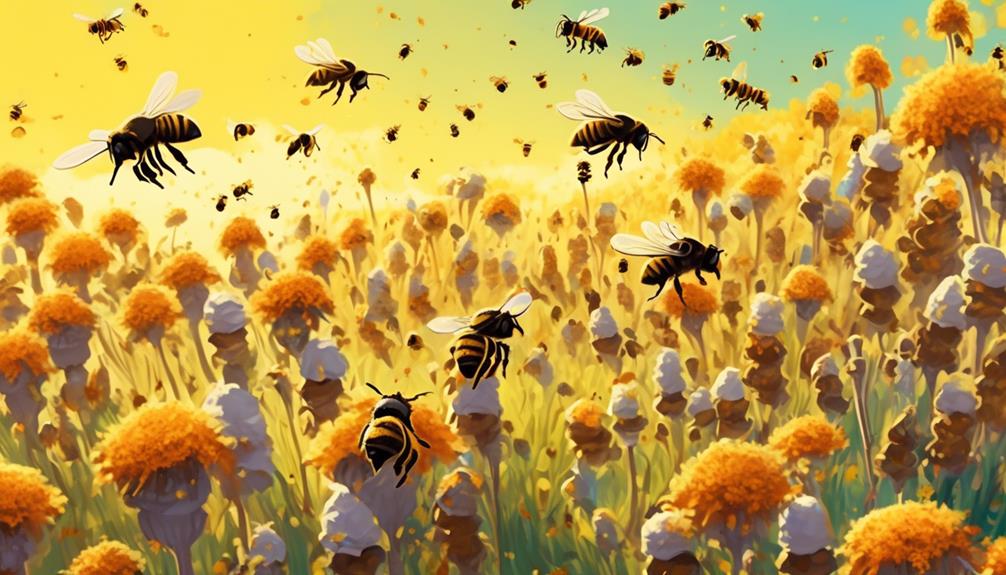
Why Do Bees Carry Dead Bees?
Have you ever wondered why bees carry their dead?
There's a theory that this peculiar behavior is linked to hive hygiene and disease control.
You see, within the complex social structure of a bee colony, there are designated 'undertaker bees' whose primary job is to remove the deceased from the hive.
But are these 'funeral rites' merely a facet of bee social order, or could they be a crucial line of defense against disease and parasitic invasion?
The answer may be more surprising than you think, so stick around to uncover the fascinating world of bees and their intriguing habits.
Key Takeaways
- Undertaker bees have the specific role of removing dead bees from the colony.
- Bees remove dead bodies to prevent the spread of diseases and parasites.
- Grooming and propolis secretion are part of bees' disease control strategies.
- Disease control strategies, including the removal of dead or diseased bees, influence the survival and reproductive success of the bee population.
Understanding Bee Social Structure
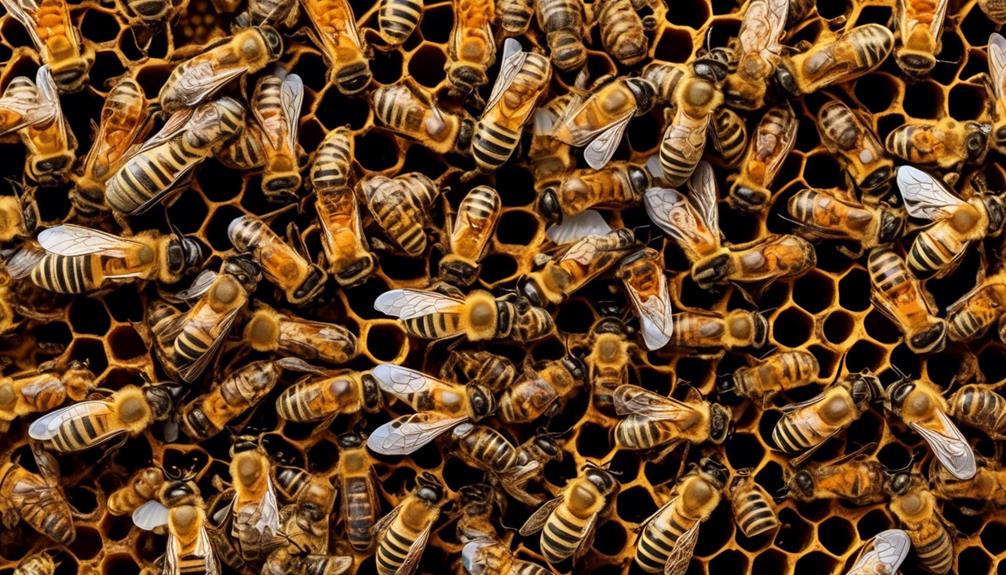
To truly grasp why bees carry their dead, you first need to understand the bees' intricate social structure, which is marked by complex roles and communication systems. In the hive, there's a queen, workers, and drones, each playing a vital role in the colony's survival. The queen, the only fertile female, reigns supreme, laying up to 2000 eggs a day. Workers, infertile females, perform various duties from nursing larvae to foraging for food. Drones, the males, have just one job: to mate with the queen.
This division of labor isn't rigid. It's fluid, determined by the colony's needs. When a worker bee dies, others quickly identify and remove the corpse. This isn't some morbid ritual, but a sanitary measure. Dead bodies can harbor dangerous pathogens, threatening the entire colony. By removing them, bees prevent the spread of disease, ensuring their survival.
Crucially, the bees' communication system plays a pivotal role here. Bees use 'waggle dances' to convey critical information, including the presence of a dead bee. It's a fascinating, highly efficient system that underscores the bees' remarkable adaptability and resilience.
The Role of Undertaker Bees
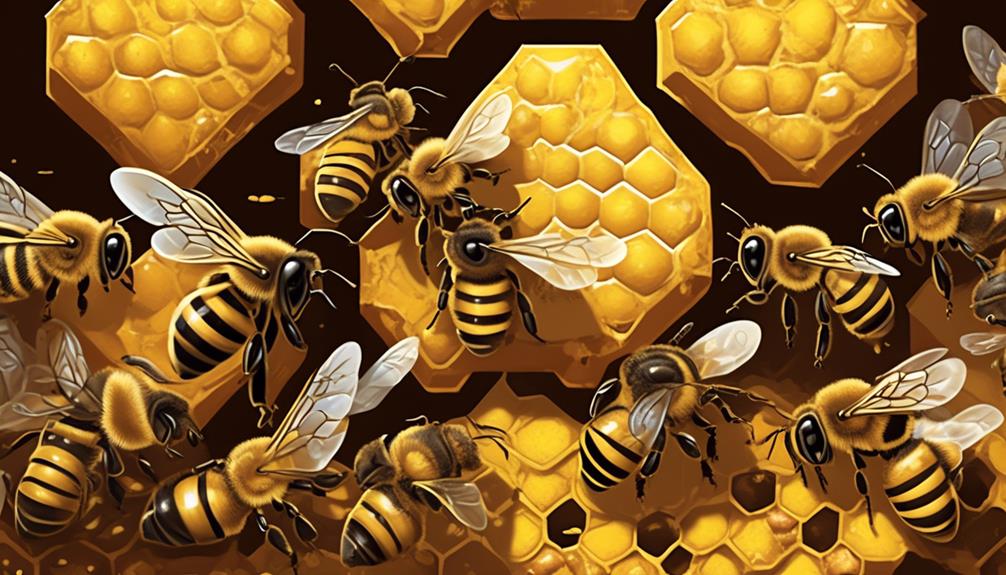
Now, let's examine the special group of worker bees known as undertakers, who shoulder the vital responsibility of identifying and removing their deceased comrades from the hive. These industrious bees play a key role in maintaining hive hygiene, which is critical for the colony's health and survival.
As you might guess, undertaker bees are named for their grim task. They're specifically tasked with detecting the scent of death, a skill they develop as they mature. Once they've located a dead bee, they grasp it with their mandibles and carry it away from the hive, often flying some distance to ensure the corpse doesn't contaminate the hive environment.
This disposal process is more than just housekeeping. It's a protective measure. Dead bees can harbor pathogens or parasites that could infect the whole colony if not promptly removed. By discarding the bodies, undertaker bees prevent the spread of diseases, contributing greatly to the overall colony health.
Hive Hygiene and Maintenance

Maintaining hive hygiene isn't just an optional task for bees; it's a crucial aspect of their survival, ensuring that their home remains a safe, disease-free zone. You see, bees are incredibly meticulous when it comes to cleaning their hives. They're fully aware that any lapse in their sanitary routines could lead to disaster.
Within the hive, specific bees, often dubbed the ‘undertaker bees,' are tasked with the removal of dead comrades. This isn't a mere act of respect, but a critical part of their hygiene regimen. Dead bees can be a breeding ground for harmful bacteria and spores, potentially causing diseases like foulbrood or chalkbrood, which can wipe out entire colonies.
Furthermore, bees engage in activities like grooming each other to prevent the spread of parasites and pathogens, and they secrete antimicrobial substances, known as propolis, to disinfect their hive walls.
In essence, a bee's commitment to hive hygiene and maintenance isn't just about cleanliness. It's a complex, essential strategy for survival, preserving hive health, and protecting their queen.
Disease Control Among Bees
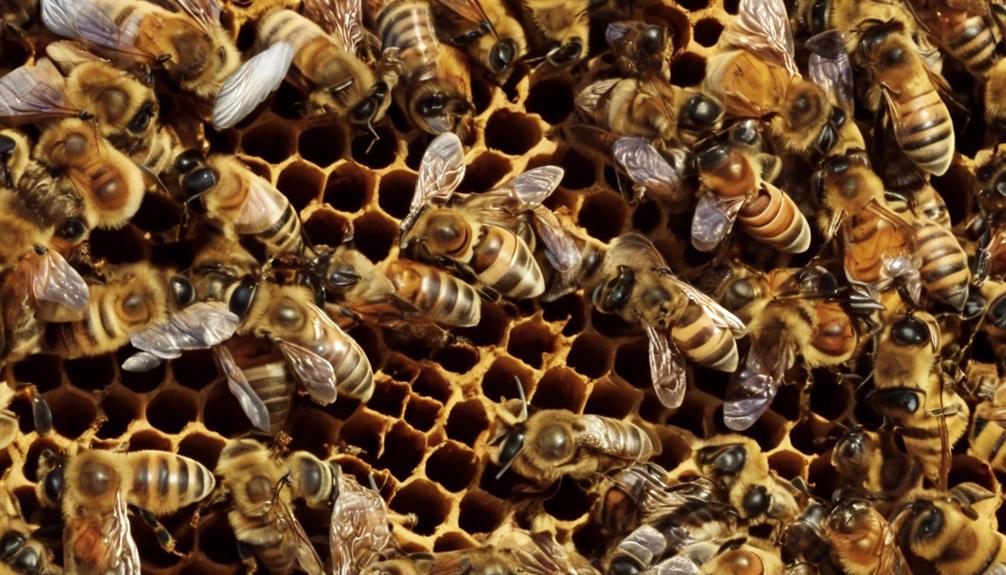
While bees' meticulous hygiene practices significantly contribute to disease prevention, it's equally critical to delve deeper into the multitude of strategies they employ for efficient disease control within their colonies. Bees utilize complex social behaviors, collectively known as social immunity, to manage disease within their hives. This includes grooming each other to remove harmful mites or fungi and using propolis, a resinous substance collected from plants, to sanitize their living spaces.
Bee colonies also display a remarkable form of adaptive immunity called 'social vaccination.' If a bee survives an infection, it can share the pathogen's scent with its nestmates, who then become better at fighting off that specific disease. Moreover, the queen bee plays a pivotal role in colony disease resistance. She's not just a breeder; the queen's genetic diversity can boost the overall health of the hive, making it more resilient to disease.
In addition, bees practice 'necrophoresis,' a process of removing dead or diseased members from the hive to prevent the spread of pathogens. This is why you'll often see bees carrying their dead comrades away from the hive. Understanding these mechanisms can help us better support bee populations, vital for our ecosystems and agriculture.
Impact on Bee Population Dynamics
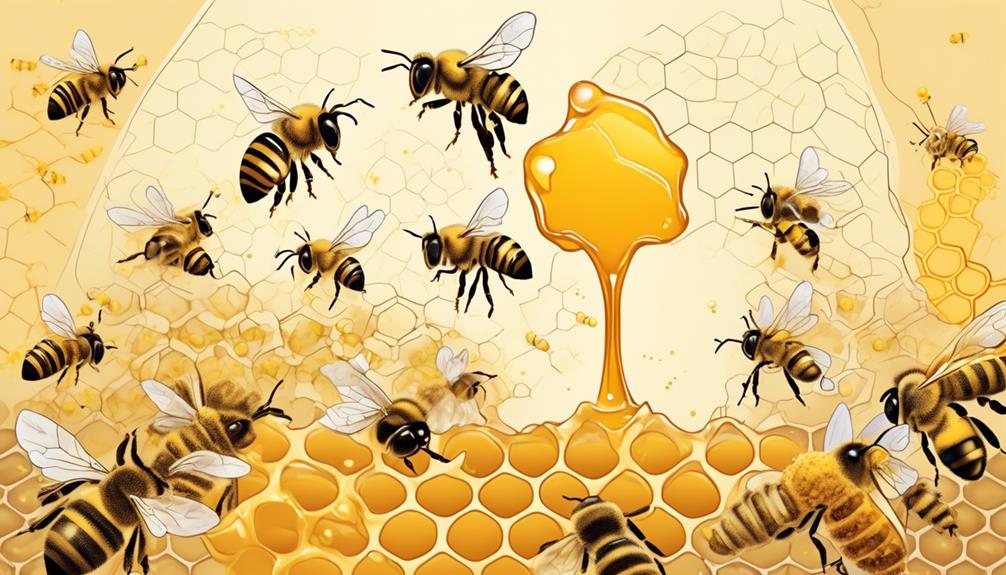
Understanding the intricate mechanisms of disease control among bees can shed light on their population dynamics, as these strategies directly influence survival rates and reproductive success within the hive. You need to grasp that a lower incidence of disease directly correlates with higher survival rates, leading to a more thriving and productive bee community.
By removing dead or diseased bees, the colony minimizes the spread of pathogens, which can drastically affect their numbers. It's a critical and self-sustaining system that ensures the survival of the fittest and the health of the entire colony.
However, changes in the environment or an introduction of new pathogens can disrupt this balance. If a colony can't effectively remove dead or diseased bees, it's more likely to experience a decline. Similarly, if the disease is too virulent, the bees' efforts may not be enough to prevent its spread.
Frequently Asked Questions
What Specific Types of Bees Are More Likely to Carry Dead Bees?
You're particularly interested in which bee species are more prone to carrying their dead.
In the vast world of bees, it's the honeybees that often perform this behavior. They're known for their strong sense of community and hygiene.
Worker honeybees take the responsibility of cleaning the hive, which includes removing dead bees. These diligent insects are more likely to undertake this task to maintain the health of their colony.
How Do Bees Recognize That Another Bee Is Dead?
Bees recognize death through a chemical signal. When a bee dies, it releases oleic acid. This distinct smell is a death marker that other bees can detect. They're instinctively driven to keep their hive clean, so they'll carry away the dead bee.
You can think of it as nature's housekeeping. They're not just recognizing death; they're also preventing disease and maintaining a healthy environment. It's truly a remarkable aspect of bee behavior.
Are There Any Other Insects or Animals Known to Carry Their Dead?
Yes, there are indeed other insects and animals that carry their dead.
Ants, for instance, are known to manage their deceased comrades. They've developed a specialized caste of workers, called undertaker ants, who remove dead ants from the colony.
Elephants are another example; they're observed to show complex behaviors around their dead, even carrying the bones of deceased herd members.
It's a fascinating display of how various species handle death.
How Does the Climate or Weather Affect the Bee's Behavior of Carrying Their Dead?
Climate greatly influences a bee's behavior. In colder weather, you'll find bees are less active, and they're less likely to carry away their dead. On the other hand, in warmer conditions, they're more active and diligent about removing dead bees from the hive. It's their way to maintain cleanliness and prevent disease spread.
Do Bees Carry Dead Bees Outside of the Hive or Just Within the Hive?
You've asked if bees carry dead ones outside the hive or just within. They do both.
Worker bees, also known as undertaker bees, remove the dead from inside the hive to maintain cleanliness. They'll carry them outside, far away from the hive to prevent disease spread. It's an essential task that keeps their living environment clean and reduces the risk of infection.
It's a fascinating demonstration of their social structure and instinctual behaviors.
Conclusion
So, you see, bees carry dead bees not out of mourning, but as a systematic, essential task. Undertaker bees keep the hive clean and disease-free, preserving the health of the colony. This behavior is integral in maintaining population dynamics and preventing disease spread.
It's a testament to the complex social structure and efficient hygiene practices of bees, highlighting their crucial role in our ecosystem. Understanding this can help us better protect these vital pollinators.



